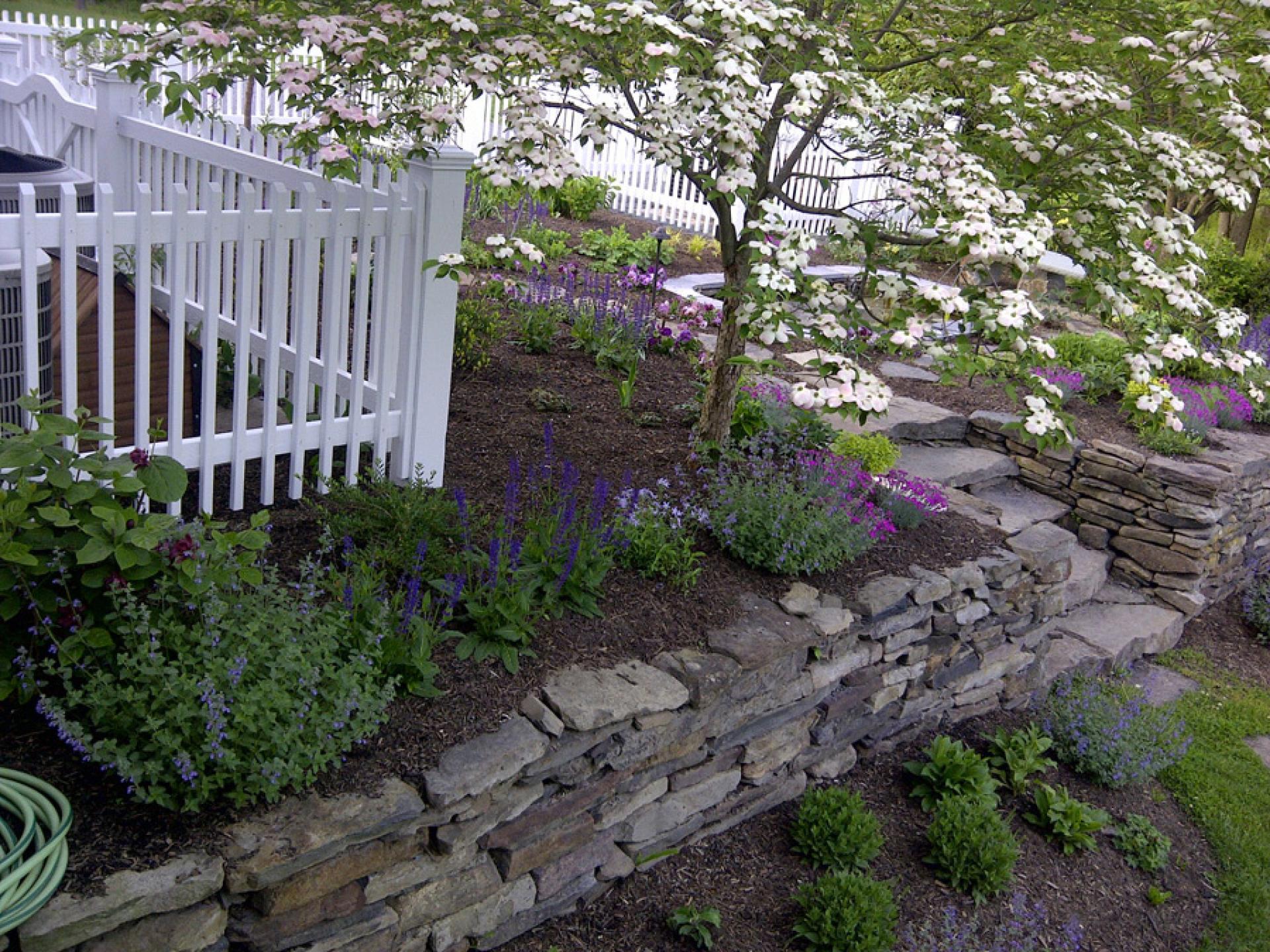You are here
Be A Better Gardener: Giving Native Plants a More Domesticated Look
Be A Better Gardener: Giving Native Plants a More Domesticated Look
by Thomas Christopher
Look at the history of gardening and you’ll see how the appearance of new types of plants in nurseries has regularly enabled and inspired new gardening styles. Think, for example, the arrival of European grasses in the 19th century that made possible the American lawn. The current focus on native plants in the United States is likewise inspiring a revolution. There’s a considerable variation in themes using indigenous vegetation. Midwesterners are planting “prairie gardens,” and Southwesterners are creating desert-themed displays of cacti and other indigenous arid-land natives, while here in the Northeast the emphasis tends to be on woodland plants. The style common to all of these, however, is naturalistic. The tendency is to create something derived from the local version of nature, with a distinctly wild look.
That has, unfortunately, put off many other gardeners. If you prefer a neater, domesticated look, you may conclude that natives, which you have only seen in a naturalistic display, won’t work for you.
That’s why I was so interested recently when I recently had the opportunity to talk with Britney O’Donnell, proprietor of Britney O’Donnell Garden Design in Stockton, N.J. Britney shared with me her techniques for taming the look of natives without diminishing their contribution to wildlife and biodiversity.
She explained to me, for example, how she uses the “Chelsea Chop.” This is a practice of cutting back perennials before they flower to help them maintain a more compact growth while also prolonging their season of bloom. In England, this is practiced around the end of May, at the time of that nation’s iconic Chelsea Flower Show. In the northeastern United States, where the growing season begins later, especially for many ‘warm season’ native perennials whose growth doesn’t get going until late spring, O’Donnell recommends doing the cutting just before the Fourth of July. She prefers using hand pruners for this rather than hedge shears, as the pruners give the plants a more natural shape. Cut your native summer and fall-blooming perennials back by a half to a third, O’Donnell says, and you will be rewarded not only with a neater bushier form but also more flowers and blossoms opening over a longer time period.
A technique that Britney O’Donnell applies to woody plants — shrubs and small, ornamental trees — is winter pruning. With her shears, again, she thins these plants and reduces the length of the longer stems. This keeps the plants more compact, and the cuts are soon masked by the new growth of spring. During this season she also practices “plunge pruning” on the evergreen shrubs, reaching in through the outer canopy of leaves or needles to thin the growth by removing branches at their bases. Allowing air and light into the plant’s interior helps to keep them disease and pest-free. It also prompts the sprouting of new branches and gives the shrubs a softer but also more compact form.
Britney doesn’t mulch except at the time of planting a bed, when she may tuck the new plants in with a blanket of shredded landscape debris that she gets for free from the town. If well matched to the soil and the site, the native plants soon create their own cover, forming a living, “green” mulch. She also grows the natives lean. She doesn’t apply fertilizers except in rare cases where she notices plants seriously struggling. The plants’ fallen leaves, which she leaves in place, decompose to provide a natural source of nutrients. Likewise, though she waters new plantings as they root in, she applies the water by hand, moistening the soil deeply a couple of times a week, and weans the plants off the extra moisture within a couple of months. Established plantings get no irrigation even in dry years.
The photographs Britney shared of her native plant gardens depicted scenes that would please even the most meticulous gardener. They would also harmonize with any traditional, non-native garden plants you might choose to include. If you keep the overall emphasis on natives, though, you’ll enjoy the benefit that Britney O’Donnell says her clients treasure most, the self-sufficiency of the natives. Many of her clients, she admits, don’t care about the ecological benefits of the native plants. But they do love being liberated from the seasonal drudgery of mulching, watering, fertilization, and spraying.
To listen to the rest of my conversation with Britney O’Donnell, log onto the Berkshire Botanical Garden’s Growing Greener podcast at BerkshireBotanical.org/growinggreener.
Be-a-Better-Gardener is a community service of Berkshire Botanical Garden, located in Stockbridge, Mass. Its mission, to provide knowledge of gardening and the environment through a diverse range of classes and programs, informs and inspires thousands of students and visitors each year. Thomas Christopher is a volunteer at Berkshire Botanical Garden and is the author or co-author of more than a dozen books, including Nature into Art and The Gardens of Wave Hill (Timber Press, 2019). He is the 2021 Garden Club of America's National Medalist for Literature, a distinction reserved to recognize those who have left a profound and lasting impact on issues that are most important to the GCA. Christopher’s companion broadcast to this column, Growing Greener, streams on WESUFM.org, Pacifica Radio and NPR and is available at berkshirebotanical.org/growinggreener.
Help Our Garden Grow!
Your donation helps us to educate and inspire visitors of all ages on the art and science of gardening and the preservation of our environment.
All Donations are 100 percent tax deductible.


